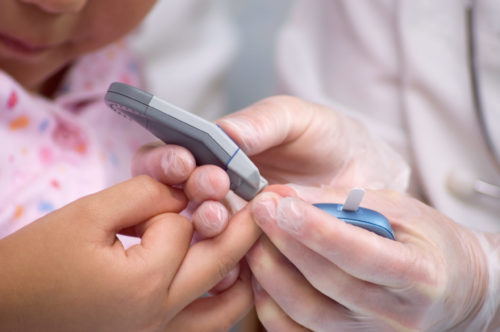Diabetes is becoming more common in young people. According to the CDC, diagnosed cases of type 1 and type 2 diabetes are surging among youth in the United States. From 2001 to 2017, the number of people under age 20 living with type 1 diabetes increased by 45%, and the number living with type 2 diabetes grew by 95%.
With November being National Diabetes Month, we want to help educate our community about the impact this disease has on individuals who are afflicted by it, as well as to emphasize the importance of awareness, prevention, treatment, and research.
What is Diabetes?
Diabetes, often known as diabetes mellitus, is a disorder in which the body has too high blood glucose levels. The body’s primary energy source is glucose, which is obtained from the food we eat. Insulin, a hormone made in the pancreas, aids it in getting to the body’s cells. Diabetes develops when the body fails to generate any insulin, or produces it in insufficient amounts, causing blood glucose levels to rise.
Consistently high blood glucose levels can lead to health issues such as heart disease, stroke, renal failure, and eyesight loss over time. However, diabetes can usually be effectively managed, and complications can be reduced with appropriate medication. Since there is presently no cure for diabetes, treatment is typically needed throughout a person’s lifetime if it cannot be reversed.
What is Type 1 Diabetes?
Type 1 diabetes, formerly known as juvenile diabetes or insulin-dependent diabetes, is an autoimmune hereditary condition that cannot be prevented. Type 1 diabetes most frequently affects children and young people, and it currently has no known cure.
People with Type 1 diabetes require many daily insulin injections or pump-infused insulin since the body cannot generate insulin, the hormone needed to move glucose from the bloodstream into the body’s cells. A nutritious diet, regular exercise, and numerous blood glucose readings are all part of the day-to-day care for a child with Type 1 diabetes. Children of all ages can learn to control their diabetes and live long, healthy lives with the right care and support.
What is Type 2 Diabetes?
The most prevalent type of diabetes is Type 2 diabetes, which is caused by insulin resistance, or the body’s improper production and/or use of insulin. While genetics may contribute to the development, being overweight is a significant risk factor. Contrary to Type 1 diabetes, Type 2 frequently responds well to lifestyle changes including a healthy diet and exercise, and it does not always require medication for treatment.
Signs and Symptoms of Diabetes
Diabetes must be detected and treated as soon as possible to reduce the risk of complications. Children’s symptoms can appear quickly, sometimes over just a few weeks. Here is what to look out for:
- Constant hunger and increase in appetite
- Increased thirst
- Rapid weight loss
- Fatigue
- Frequent urination
- Bad breath
- Mood swings
So, your child has been diagnosed…what’s next?
When your child is first diagnosed, it can be overwhelming for a parent. Here are a few tips to help you get started in caring for your diabetic child:
- There are two types of insulins, long and short. It will be beneficial to learn when to use the different kinds.
- Learn to check your child’s blood sugar and interpret the results.
- Exercise, illness, and stress all affect blood sugar levels. Be on the lookout to see how they affect your child specifically.
- Don’t forget to build self-esteem and understand the range of emotions of a child who may suddenly feel very overwhelmed – it’s scary for them too!
- Educate friends, family, school administrators, and others about your child’s disease and what they can do to help. It’s important for those around your child to be educated on how to care for them.
Can Diabetes be Prevented?
Although we cannot prevent Type 1 diabetes, Type 2 diabetes can be prevented by:
- Maintaining a healthy weight
- Having an active lifestyle
- Limiting sugary foods and replacing them with lean meats and fiber
We understand that having a child diagnosed with Type 1 or 2 diabetes can be scary and overwhelming. Our doctors are here and want to help you walk through any and every question you might have pertaining to your child. If you are concerned that your child could be showing diabetic signs, please visit one of our three offices: https://childrensmedicalgroup.net/locations/

